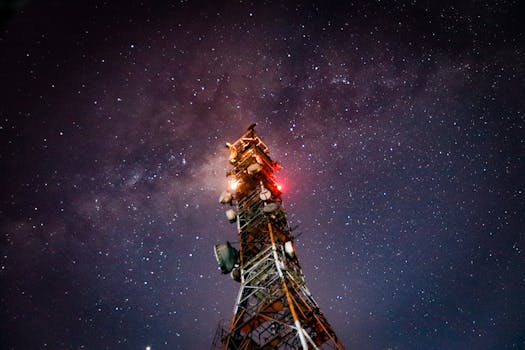MEO Satellites: Revolutionizing Global Connectivity with Medium Earth Orbit Technology

MEO Satellites: Revolutionizing Global Connectivity with Medium Earth Orbit Technology
MEO satellites, or Medium Earth Orbit satellites, are a type of satellite that operates at an altitude of approximately 2,000 to 36,000 kilometers above the Earth’s surface. This orbit is lower than the Geostationary Orbit (GEO) used by traditional telecommunications satellites, but higher than the Low Earth Orbit (LEO) used by satellites such as the International Space Station.
The MEO orbit offers several advantages over traditional GEO satellites, including lower latency, higher bandwidth, and improved reliability. MEO satellites are capable of providing global coverage, making them an ideal solution for applications such as satellite communication, navigation, and remote sensing.
How MEO Satellites Work
MEO satellites use a combination of advanced technologies to provide high-speed and reliable communication services. They are equipped with sophisticated antennas and transponders that allow them to transmit and receive data at high speeds. The satellites also use advanced propulsion systems to maintain their orbit and ensure that they remain stable and operational.
One of the key benefits of MEO satellites is their ability to provide low-latency communication services. Because they operate at a lower altitude than traditional GEO satellites, MEO satellites can provide round-trip latency of less than 100 milliseconds, making them suitable for applications such as real-time video conferencing and online gaming.
Applications of MEO Satellites
MEO satellites have a wide range of applications, including satellite communication, navigation, and remote sensing. They are used by governments, businesses, and individuals to provide global connectivity and communication services. Some of the key applications of MEO satellites include:
Satellite communication: MEO satellites are used to provide high-speed internet and communication services to remote and underserved areas. They are also used to provide backup communication services in the event of a disaster or network outage.
Navigation: MEO satellites are used to provide navigation services, such as GPS and GLONASS. These services are used by a wide range of industries, including aviation, maritime, and transportation.
Remote sensing: MEO satellites are used to collect data and images of the Earth’s surface. This data is used for a wide range of applications, including weather forecasting, climate monitoring, and agricultural management.
Benefits of MEO Satellites
MEO satellites offer several benefits over traditional GEO satellites, including:
Lower latency: MEO satellites provide lower latency than traditional GEO satellites, making them suitable for applications that require real-time communication.
Higher bandwidth: MEO satellites are capable of providing higher bandwidth than traditional GEO satellites, making them suitable for applications that require high-speed data transfer.
Improved reliability: MEO satellites are more reliable than traditional GEO satellites, with a lower risk of signal loss and interference.
Global coverage: MEO satellites are capable of providing global coverage, making them an ideal solution for applications that require communication services in remote and underserved areas.





